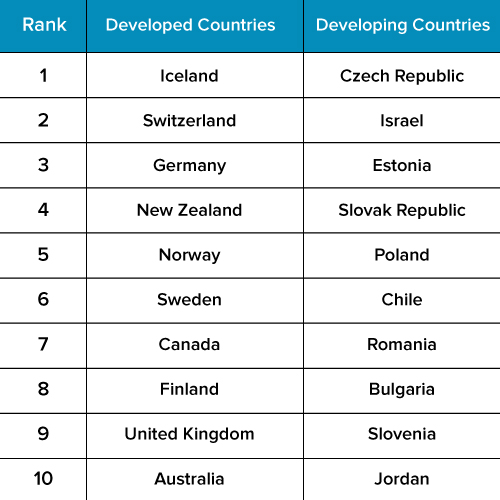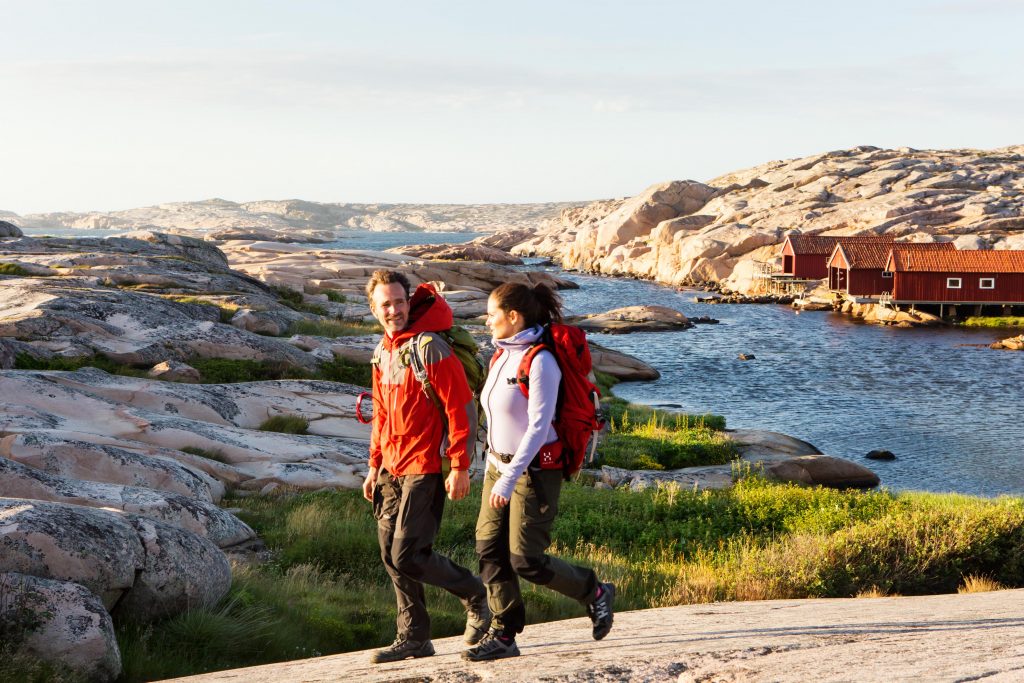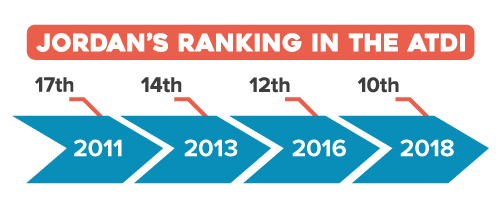2018 marks a decade since the launch of the Adventure Tourism Development Index (ATDI), a global ranking of countries for adventure tourism competitiveness produced periodically by the Adventure Travel Trade Association (ATTA) and The George Washington University International Institute of Tourism Studies.
The 2018 ATDI ranks 191 countries in 10 categories to gauge potential competitiveness in the adventure tourism sector. Scores do not reflect a country’s current popularity or market presence in adventure tourism, although in some cases a country’s current appeal may correspond with its ATDI score. The rankings are derived through an analysis of insights from an expert panel and along with data incorporated from a diversity of non-subjective sources such as gross domestic product (GDP), population density statistics, protected areas, the Environmental Performance Index, the World Resources Institute, and foreign and commonwealth travel warnings.
The 10 pillars of the ATDI are: Sustainable Development Policy, Safety and Security, Health, Natural Resources, Cultural Resources, Adventure Activity Resources, Humanitarian, Entrepreneurship, Tourism Infrastructure, and Image. This year’s Index is notable for the inclusion of a social listening component, which analyzes online reviews travelers share on social media.
The ATDI ranks countries in two categories, developed and developing, based on the country’s United Nations designation. In the 2018 rankings, Iceland tops the list of developed nations and Czech Republic leads for developing nations.

Ten years ago, Iceland ranked ninth in the ATDI; its rise through the ranks can be traced to gains in the Health and Image categories. Researchers observe it wasn’t until after the economic crash in 2008-2009, which hit the island nation hard, that Promote Iceland, a public-private partnership leading the country’s promotion, began investing more in marketing and product development. In addition, the island became an airline hub, improving accessibility and building awareness.
Iceland, along with Switzerland, Germany, New Zealand, Norway, Australia, Finland, and Canada, has remained consistently in the top because of its ongoing excellent performance in the Adventure Activity Resources and Entrepreneurship categories. Switzerland, which scored particularly high in Entrepreneurship in 2018, also bolstered its position with high scores in the Sustainable Development and Safety categories.
Sweden is also in the top 10 in 2018, moving up more than any other country in the Index this year from 16 in the 2016 Index to the sixth position in 2018. Sweden’s rise is attributed to improvements in its Sustainable Development and Health scores.

Among developing countries, Czech Republic continues to hold the top position, as it has since 2013. Czech Republic, as with the developed country leaders, consistently excels in the two key categories of the ATDI — Adventure Activity Resources and Entrepreneurship.
Jordan is also notable in 2018 for finding its way into the top 10 list of developing countries after years of steady improvement, as discussed in the ATTA webinar, Quantifying the Economic Impact of Adventure Tourism and Paths Forward. In the 2018 ATDI, Jordan’s scores improved in four categories —Sustainable Development, Health, Cultural Resources, and Humanitarian — and it maintained its already strong performance in Adventure Activity Resources and Entrepreneurship.

While the commercial outlook for adventure tourism continues to remain strong, industry observers note overtourism is a growing concern. As the ATTA’s CEO, Shannon Stowell, noted in the closing keynote of the Adventure Travel World Summit in October 2018, “We in adventure travel used to think we were the good guys in tourism. … But our position has become increasingly uncomfortable with adventure travelers also overrunning destinations, loving them to death. ... Overtourism, climate change, plastic waste, cultural erosion, and habitat loss are not on the horizon. They are here. Now. ... We need healthy tourism to be the standard and for exploitative, destructive tourism to end.”
The inclusion of social media netnography — an analysis of online reviews that travelers share on social media — in this year’s report also offers a perspective on destinations’ performance from the traveler perspective. Particularly with respect to destination popularity, social media analysis may be applied to help gauge whether a particular destination is nearing a popularity tipping point. A study of three popular adventure travel hiking destinations in the 2018 ATDI — the Inca Trail, Mt. Everest Base Camp, and Mt. Blanc — offers destination managers a holistic view of traveler feedback from these destinations alongside ATDI scores to support future planning. While this study limited the social media component to hiking specifically, destination managers may consider using this approach more broadly, taking into account travelers’ online reviews when evaluating adventure resources and other core assets for tourism development.
The ATDI scorecard can be used as a tool to facilitate thinking about ways to promote growth as well as help destination managers and other stakeholders define priorities and craft a shared vision for sustainable growth, tackle areas of poor performance, and enhance readiness for growth.
